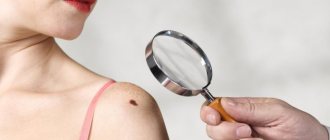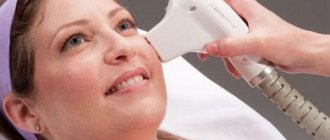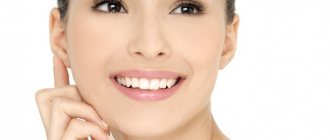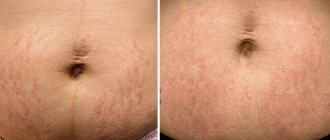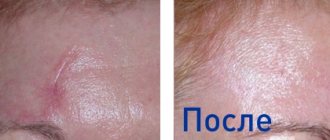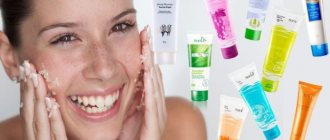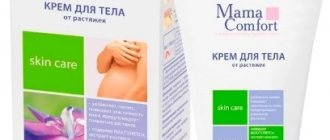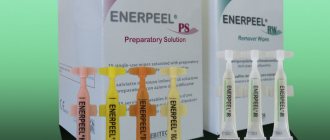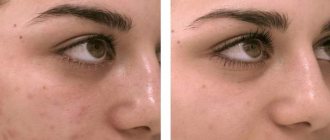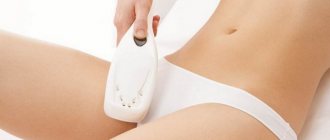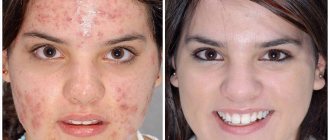Beauty is a passing thing, and in order to have a radiant appearance as long as possible, it is necessary to preserve it. Cosmetic products cannot always cope with defects such as loose, uneven, pigmented skin and age-related changes. Thousands of women have become convinced that the most effective procedure in this case is laser facial resurfacing (LOF). This type of resurfacing can be performed on the entire face or certain areas of it. But, on the way to ideal skin, it is worth remembering that after the procedure it is important to strictly follow all the doctor’s recommendations.
Laser resurfacing
The technology has been used by cosmetologists since the middle of the last century. Since then, lasers have been improved and their exposure no longer causes serious side effects.
Today, clinics and beauty salons use fractional lasers that target the skin tissue and form microthermal zones, leaving the surrounding surface untouched. Thanks to this, the recovery period is reduced to several days. The body’s protective reaction leads to the active synthesis of substances necessary for skin elasticity - collagen and elastin.
Laser resurfacing replaces chemical peeling. This procedure does not cause an allergic reaction and is generally safer due to the targeted effect on the skin.
Other benefits of laser rejuvenation:
- painlessness - no anesthesia is required during the session, most patients feel only warmth and a slight tingling sensation on the skin;
- the ability to fine-tune the laser;
- quick rehabilitation compared to other methods - after the procedure, if all the rules are followed, after 1-2 days you can return to your normal rhythm of life, and in 2 weeks the skin will be completely restored.
Mixed techniques of hardware influence are gaining popularity. Cosmetologists often combine laser with radiofrequency therapy. It turns out to be a semi-ablative procedure, when the laser creates a mesh of microthermal zones on the face, and radio waves penetrate the layers of the skin and cause contraction of collagen fibers. As a result, this substance is produced more actively, which further reduces the recovery period and gives better results.
Contraindications to laser resurfacing:
- skin neoplasms, oncology;
- tendency to scars;
- pregnancy and lactation;
- poor blood clotting and taking medications to thin it;
- diabetes.
After the session, redness appears, swelling may occur and even the temperature may rise. Then these symptoms disappear and peeling, itching begins, and crusts form on the face. You don't need to touch them; they will come off on their own in a few days. This is where the restoration ends.
Many people believe that grinding should not be carried out in the summer, when the sun is active during the day. Cosmetologists have refuted this myth. If the patient follows all the recommendations for skin care after the session, then he will not have problems with pigmentation.
Recommendations for care after the procedure:
- in sunny days, apply a high SPF cream to the treated skin;
- stop using scrubs, rolls, and peels for a while;
- do not smoke or drink alcohol, eat right;
- do not visit swimming pools, baths, saunas, gyms;
- use restorative products recommended by a cosmetologist.
Laser rejuvenation: contraindications and indications
If you are wondering whether fractional laser rejuvenation will help you, then read the indications for which this procedure is recommended by specialists for excellent results:
- Stretch marks, spider veins and scars;
- Enlarged pores;
- Acne;
- Pigmentation;
- Flabby, fading, sagging skin;
- Wrinkles, crow's feet in the eye area.
If among these points you come across something that is typical for your skin, then be sure to take a course of fractional facial rejuvenation, and you will forget about your problems.
Contraindications
Before making an appointment at the clinic for a fractional laser rejuvenation procedure, you need to familiarize yourself with the contraindications. If you have read negative reviews on the Internet about this method of rejuvenation, then you should not be upset and abandon it completely. Most likely, the authors of such reviews simply did not take into account the presence of contraindications:
- Inflammatory processes in the treatment area;
- Skin infections;
- Psoriasis;
- Allergy;
- Malignant tumors in the laser impact area;
- Epilepsy.
There are many more indications than contraindications, so if you don’t have any of the above, then you shouldn’t refuse this truly wonderful procedure.
Plasma grinding
The skin repair process in this procedure is activated using a stream of ionized nitrogen-based gas. Plasma energy heats the skin to the deep layers, stimulating the work of fibroblasts - the cells responsible for the formation of collagen and elastin. During recovery, the old layer of skin comes off and new healthy skin appears underneath. This happens in about a week.
Plasma power is adjusted based on the type and location of the problem. For example, high power is always used to eliminate post-acne scars, and low power is always used to combat age spots.
One of the main advantages of plasma resurfacing is the effect without burns, scars and other complications characteristic of temperature procedures.
Main stages of the procedure
- Application of anesthetic gel
- The doctor selects the laser power and program.
- The first laser pass removes the top dead layer of skin
- The doctor wipes the face with a special solution
- Next, a second pass is carried out which removes the remaining defects and evens out the skin layer.
- The laser removes from 2 to 6 layers of skin. Up to 2 layers can be removed without anesthetic.
- More than 2 layers is already deep sanding and is performed strictly on the doctor’s recommendation (anesthesia is required).
- At all stages, the skin is blown with a stream of cold air, which significantly reduces pain.
Mesorolling
The second name of this technique is microneedling therapy. During the session, multiple small punctures are made on the patient’s skin using a device. Microscopic damage activates the regeneration process, which reduces the number of wrinkles.
Mesorolling is suitable for people with thin, sensitive skin, as it does not cause the formation of age spots and scars. The procedure is much less traumatic compared to laser resurfacing.
In combination with cosmetic products selected by a cosmetologist, you can achieve a more serious effect from microneedling therapy. The punctures allow the active substances to penetrate into the deeper layers of the skin.
Stages of development
According to the severity of acne, three stages are distinguished.
First stage
- comedonal, characterized by the appearance of comedones, consisting of keratinized epidermal cells with a black tip (cork), these are nothing more than products of chemically altered sebum, microbes and dust.
Second stage
- papulopustular acne of moderate severity. Papular acne is a small cone-shaped element that looks like a comedon, at the base of which a small formed inflammatory infiltrate has accumulated. Pustular acne is the next stage in the development of papular acne. More often it is a painful, deep red nodule with a purulent head. After the purulent head falls off, a scar forms.
Third stage
- extremely severe forms of papulopustular acne, with almost the entire area of the face affected (possibly affecting the upper back and chest). Large protruding pustules are visually distinguished. There are large numbers of conglobate acne - a combination of inflamed comedones, necrotic acne - with an area of necrosis in the center of the element after healing, which leaves scars.
It should also be said about such a problem as complications of acne: stagnant spots, telangiectasia, atrophic and hypertrophic scars.
The effectiveness of acne treatment with laser radiation is due to the fact that the method allows taking into account various factors influencing the development of acne, and above all the severity of the disease itself at its different stages.
Dermabrasion
Deep face resurfacing is an extremely traumatic procedure, removing skin down to the deepest layers.
Dermabrasion is not done without anesthesia, because the device causes serious damage.
Using technology, you can get rid of deep wrinkles, warts, tattoos and other serious skin changes.
After the session, a bandage is applied to the treated area. You will have to wear it for about two weeks. The face turns red and sometimes bleeds, swelling appears. Afterwards, a crust forms on the skin, which comes off on its own within a week. When wearing the bandage is stopped, a healing cream must be applied. Side effects in the form of redness will appear for about 2 months.
Contraindications to dermabrasion are a tendency of the skin to scar and form ulcers, inflammation, diabetes, heart and vascular disease, tuberculosis. It is also prohibited to do deep resurfacing if you have recently had a facelift, treatment of acne or sensitivity to cold.
Laser rejuvenation: patient reviews
Anna (33 years old), St. Petersburg
I had a laser skin rejuvenation procedure at 30 and 33 years old. I want to say that you should not believe advertising that exaggerates the effect several times. Of course, there is a result, but not as impressive as it is said. My skin became more elastic, the pores shrank, my face took on a fresher appearance, the fine mesh was removed, the wrinkles on my forehead were slightly smoothed out, the freckles that appeared after the summer brightened and became smaller in diameter. If you know what the effect will be and do not hope for a miraculous transformation, you will be satisfied. It was especially painful around my mouth and ears, despite the pain relief. You definitely need to take a vacation from work, because you can only go outside after 5-6 days. The result will be better if you are under 40 years old, since the skin's ability to regenerate has not yet weakened. And after 40, several sessions will be required. At one time I also did chemical peels, but I realized that it was better to undergo laser rejuvenation once. This is the same as attending a whole course of mid-peelings. And the cost will be the same.
Alena (39 years old), Moscow
I want to share my experience. When I started thinking about fractional facial rejuvenation, I read a lot of reviews on the Internet. The result depends on how experienced the specialist who will perform the procedure is, what kind of skin you have and what equipment. I’ve been planning fractional rejuvenation for a long time, I’ve consulted with my cosmetologist more than once, but I still couldn’t make up my mind, because the method is still traumatic. The specialist told me that it is better to do the procedure on the eve of the weekend, since it takes 2-3 days for the skin to recover. I put off going to the salon, but still my age, unclear oval face and wrinkles did not give me rest. I did mesotherapy, but the wrinkles still return, the skin becomes rougher and dull. And I decided!
I'll tell you a little about how the procedure is carried out. First, an anesthetic is applied - ointment with lidocaine. Be sure to notify your cosmetologist if you are allergic to this substance. In this case, the master will use another tool. The ointment took effect on me within 20 minutes, and rejuvenation began). It took about 20 minutes to treat the face and neck. I must say that the sensations are unpleasant, but tolerable. There is a tingling sensation. It is very important to use a modern American or Italian laser because it is considered safe.
Half an hour passed and it became clear why the procedure is recommended to be done before the weekend. The anesthesia began to wear off and the skin became very red. I was by car, so I quickly got home, without showing myself to others, and immediately applied Bepanten Plus. It cools the skin and relieves inflammation. The cosmetologist advised me to apply it to the skin often and not to steam my face for several days.
My redness subsided within a day. Thin crusts appeared on those areas of the skin where the laser was applied. This is not scary, since new skin has formed and the old one has gone away. You just need to wait a couple of days and apply Bepanten. On the fourth day you can take a hot bath. After the bath, these crusts became soft, I removed them, while massaging the skin with my fingertips. Then it is better to apply moisturizer, then the new skin will glow. A week later, the result was obvious: I looked at least five years younger, age spots on my forehead and cheeks disappeared, the oval of my face became more toned, and the crow’s feet around my eyes became smaller. What pleased me most was the barely visible wrinkle across my forehead, which before the procedure was deep and spoiled my mood. My cosmetologist said the result was excellent. If you repeat the session after a month and a half, the effect can be consolidated for a longer time. I have already decided that I will definitely repeat it again.
Read material on the topic: Plasmolifting of the face - a breakthrough in domestic cosmetology
Microdermabrasion
This is a more gentle technique compared to deep grinding. Microdermabrasion is a salon procedure that involves cleansing with a laser or special handpieces with abrasive crystals at the end.
Despite the low trauma, a course of microdermabrasion eliminates scars. To achieve results, you need to undergo 4-6 grinding sessions. In individual cases, the course can last much longer.
The procedure is painless and completely safe. Recovery occurs almost unnoticed by the patient. To get results without side effects, you need to apply sunscreen in the first few days after the session.
Do not use cosmetics containing alcohol and do not visit the solarium during the rehabilitation period - it lasts a week.
Rehabilitation period
After the procedure, discomfort is often practically not noticeable. The crusts will disappear within 7–10 days. Experts recommend lubricating laser-treated areas with antiseptics. Redness of the dermis will be noticeable for several weeks (at least 10 days). During this period, the use of decorative cosmetics is allowed. You can return to an active lifestyle after 3–4 weeks.
After a laser resurfacing session, it is advisable to:
- Do not touch the surface of the skin that was exposed to the laser for 24 hours. Protect treated areas in every possible way from aggressive physical, chemical and mechanical influences. It is also prohibited to wet the dermis. Such caution is extremely necessary, since it will prevent the development of inflammatory processes. Complete sterility is important;
- on the second day, it is permissible to wash your face with cold running water and apply moisturizers to the surface of the skin (Actovegin or Solcoseryl are suitable). Cold compresses, irrigating the areas with thermal water, and rubbing the skin with ice cubes will also be helpful at this stage. The described procedures will help the dermis recover faster;
- on the 3rd–4th day, continue moisturizing and washing the skin with thermal water;
- do not remove crusts during the first 7 days, otherwise the rehabilitation period may last up to six months, since spots and scars will take longer to heal;
- Avoid UV exposure for a month. Various means can be used for this purpose. The same applies to the harmful effects of cold. “New” skin is very delicate, so it is not able to properly cope with negative effects. This circumstance can complicate and delay the recovery process;
- stop drinking alcohol and smoking. They tend to slow down recovery processes;
- sleep exclusively on a high pillow. This applies to the first days. This way it will be possible to reduce swelling.
Please note: in case of pronounced pain syndrome, it is allowed to take anti-inflammatory and analgesic drugs, but under the strict supervision of a specialist.
